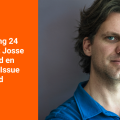
The historic election victory of the BoerCurgerMovement has brought a lot of attention to the gap between city and countryside. The gap has now completely returned. Politicians, journalists and opinion makers have been pointing this out for decades, and not without effect: almost 60 percent of Dutch people experience a gap between city and countryside, as do 85 percent of farmers. Johan Remkes explicitly mentioned the gap when presenting his nitrogen report. But how real is the most famous gap in the Netherlands?
The gap and research
Researchers Emily Miltenburg and Twan Huijsmans from the Social Cultural Planning Office (SCP) recently conducted research to the political views of urban and rural residents. The conclusion: there are differences, but there is no gap – the differences inside cities and inside the countryside are greater than the differences between them. In short: who you are matters more than where you live. The urban-rural divide is like frame a resounding success, but according to the SCP researchers it has limited analytical value.
The gap and communication
Communication professionals who reinforce these types of frames ensure that the gap becomes even more vivid in the minds of Dutch people. That is not without consequences. People act according to the social trends they assume. These types of frames can turn into persistent prejudices that also manifest themselves outside the voting booth. There is therefore a responsibility to take at face value popular frames that violate the truth to a greater or lesser extent. This certainly applies to those who deal with framing in a professional manner, such as our fellow communications professionals. They realize all too well that frames help shape reality, but sometimes treat this lightly. Will you take it into account in your next opinion piece or press release?



